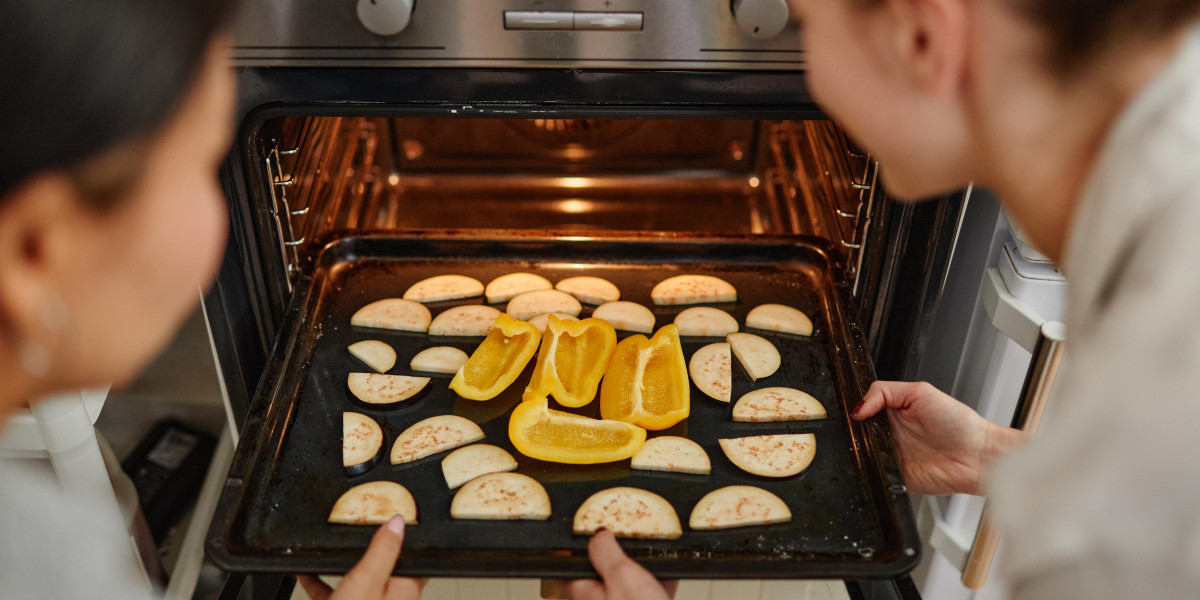The Ultimate Guide to Built-in Ovens: Enhancing Your Kitchen Experience
Built-in Ovens and hobs have actually ended up being a popular choice in contemporary kitchen areas, using a blend of performance, design, and benefit. Unlike standard freestanding ovens, built-in ovens are integrated flawlessly into cabinets, supplying a streamlined look that can improve the visual appeal of any kitchen. This short article explores the various kinds of built-in ovens, their advantages, installation considerations, and maintenance ideas.
Understanding Built-in Ovens
Built-in ovens are designed to be set up directly into kitchen cabinets, permitting a more tailored kitchen setup. They normally come in 2 primary types: single and AEG SurroundCook Double Oven - 61L Capacity ovens.

Types of Built-in Ovens
Single Ovens: These units use one cooking compartment, suitable for smaller kitchens or homes where cooking demands are modest.
Double Ovens: As the name suggests, these units feature two different cooking compartments, enabling users to cook several meals at different temperature levels at the same time. This is particularly beneficial for large families or those who frequently captivate visitors.
Steam Ovens: These ovens cook food utilizing steam, which can help maintain moisture and nutrients. Steam ovens are gaining appeal due to their health advantages.
Combination Ovens: These versatile appliances combine the functions of a regular oven and a microwave, making them ideal for fast cooking and reheating.
Key Features to Look For
When thinking about a built-in oven, there are several functions that can enhance your cooking experience:
Smart Technology: Many contemporary built-in ovens come geared up with wise innovation, permitting users to manage their oven from another location through smartphone apps. Functions include pre-heating the oven, changing cooking times, and keeping an eye on cooking development.
Self-Cleaning Functions: Built-in ovens with self-cleaning capabilities can save effort and time in kitchen maintenance.
Convection Heating: This function flows hot air for even cooking, making it perfect for baking.
Safety Features: Look for designs geared up with features like cool-to-the-touch oven doors and automated shut-off choices for added safety.
Advantages of Built-in Ovens
Visual Appeal: Built-in ovens offer a smooth and contemporary appearance that can enhance the overall design of a kitchen. They can be incorporated into cabinetry, making them less invasive than freestanding designs.
Space Efficiency: Built-in ovens optimize kitchen space, particularly in smaller sized kitchens where every inch counts. They can be placed at eye level, making it much easier to monitor cooking without bending down.
Enhanced Functionality: With their advanced features, built-in ovens provide improved cooking experiences and increased functionality compared to traditional ovens.
Setup Considerations
Installing a built-in Cookology 72L Electric Oven & Microwave Combo needs careful planning and factor to consider. Here are some bottom lines to bear in mind:
Space Requirements: Ensure that the selected oven fits snugly into the available cabinet area. Measure the dimensions precisely, representing ventilation and clearance requirements.
Electrical Requirements: Built-in ovens generally need a dedicated electrical circuit. Speak with an electrical expert for appropriate installation.
Ventilation: Proper ventilation is vital for ideal oven performance. Confirm that the setup area has sufficient ventilation to avoid getting too hot and guarantee safe operation.
Professional Installation: While DIY setup may seem tempting, employing the aid of an expert can make sure that the oven is set up properly and securely.
Setup Steps
| Setup Step | Description |
|---|---|
| Step 1: Measure | Procedure the cabinet opening for your oven. |
| Step 2: Prepare | Prepare the electrical outlet and ventilation alternatives. |
| Step 3: Connect | Link the oven to power, ensuring all precaution are stuck to. |
| Step 4: Secure | Secure the oven within the cabinetry, using appropriate screws and brackets. |
| Step 5: Test | Run a test to ensure the oven is functioning properly. |
Upkeep Tips
Regular upkeep can extend the life of your built-in oven and guarantee ideal performance. Here are some upkeep suggestions:
Clean Regularly: Wipe down the oven exterior and clean the interior routinely. Use self-cleaning functions where available.
Inspect Seals: Ensure that door seals are undamaged to preserve performance and cooking performance.
Screen Performance: Pay attention to how your oven functions-- if you observe irregular cooking or uncommon sounds, it might need expert servicing.
Follow Manufacturer Guidelines: Always comply with the upkeep standards offered by the producer. This can help avoid problems and ensure that guarantees stay legitimate.
Frequently Asked Questions about Built-in Ovens
What is the difference in between a built-in oven and a freestanding oven?
- Built-in ovens are integrated into cabinets, providing a streamlined appearance, while freestanding ovens are standalone appliances that can be placed throughout the kitchen.
Do built-in ovens require more maintenance than routine ovens?
- Not always. Maintenance depends on use and cleansing routines more than the type of oven. Routine care is necessary for all ovens.
Can I set up a built-in oven myself?
- While it is possible to set up a built-in oven yourself, it is suggested to hire an expert to make sure safe and accurate setup, particularly regarding electrical requirements.
What are the typical costs of built-in ovens?
- Costs can differ considerably based on brand name, features, and requirements. Fundamental designs may begin around ₤ 800, while high-end designs can go beyond ₤ 3,000.
Are built-in ovens energy-efficient?
- Many modern built-in ovens are created to be energy-efficient. Search for models with an ENERGY STAR certification for the best performance.
In conclusion, built-in ovens are an exceptional addition to any contemporary kitchen, combining visual appeals with functionality. By understanding the different kinds of built-in inbuilt ovens, their functions, and the associated installation and upkeep requirements, homeowners can make an informed choice that improves their cooking experience and overall kitchen style. As cooking technology progresses, built-in ovens are likely to play an integral function in the future of home kitchen areas, ensuring delicious meals are prepared with ease and convenience.






